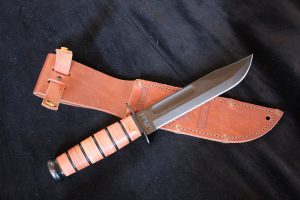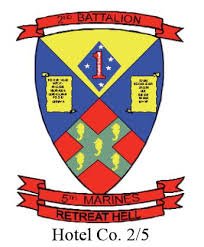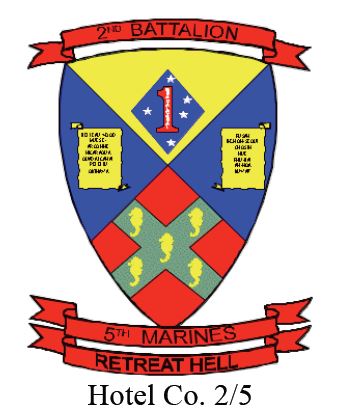 Ka-Bar (trademarked as KA-BAR) is the contemporary popular name for the combat knife first adopted by the United States Marine Corps in November 1942 as the 1219C2 combat knife (later designated the USMC Mark 2 combat knife or Knife, Fighting Utility), and subsequently adopted by the United States Navy as the U.S. Navy utility knife, Mark 2. Ka-Bar is the name of a related knife manufacturing company, Ka-Bar Knives., Inc. (formerly Union Cutlery Co.), of Olean, New York, a subsidiary of the Cutco Corporation.
Ka-Bar (trademarked as KA-BAR) is the contemporary popular name for the combat knife first adopted by the United States Marine Corps in November 1942 as the 1219C2 combat knife (later designated the USMC Mark 2 combat knife or Knife, Fighting Utility), and subsequently adopted by the United States Navy as the U.S. Navy utility knife, Mark 2. Ka-Bar is the name of a related knife manufacturing company, Ka-Bar Knives., Inc. (formerly Union Cutlery Co.), of Olean, New York, a subsidiary of the Cutco Corporation.
Although Ka-Bar Knives, Inc., currently makes a wide variety of knives and cutlery, it is best known for the Ka-Bar Fighting/Utility knife, which has traditionally used a 7-inch (17.8 cm) 1095 carbon steel clip point blade and leather-washer handle.
As the knife went into large-scale production, the Marines issued the Ka-Bar Fighting Utility knife to reconnaissance and engineering units and to any Marine armed with the M1911 pistol, M1 carbine, BAR, or crew-served machine gun while rifle-armed M16 Marines were typically issued a bayonet.
Marines today often treat the blades, guards, and pommels with non-reflective black spray paint to reduce reflected light and give them additional protection against saltwater corrosion. Besides use as a fighting knife, the Ka-Bar has proved useful as a utility knife, for opening cans, digging trenches, and cutting wood, roots, wire, cable, and anything else we could think of. I often barbequed a piece of meat by using mine as a fork utensil to hold it over an open flame.

